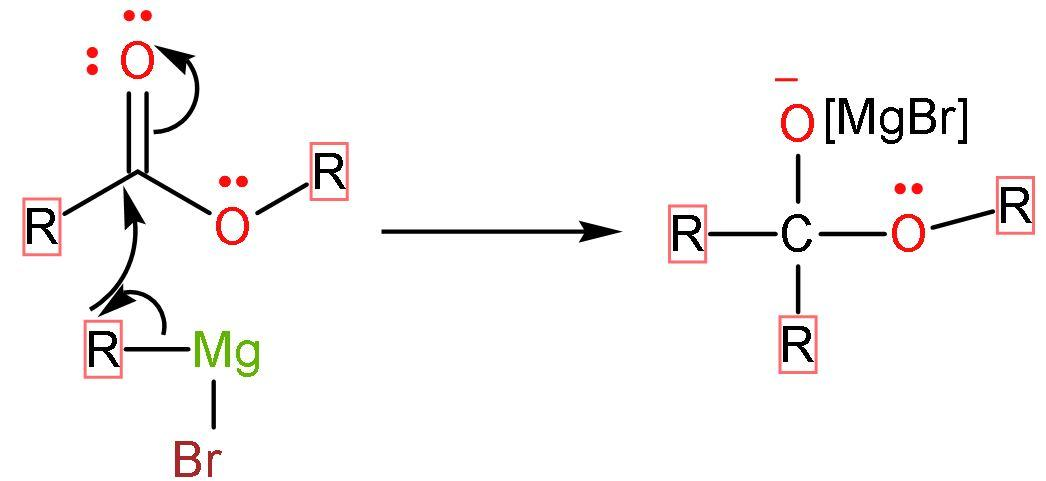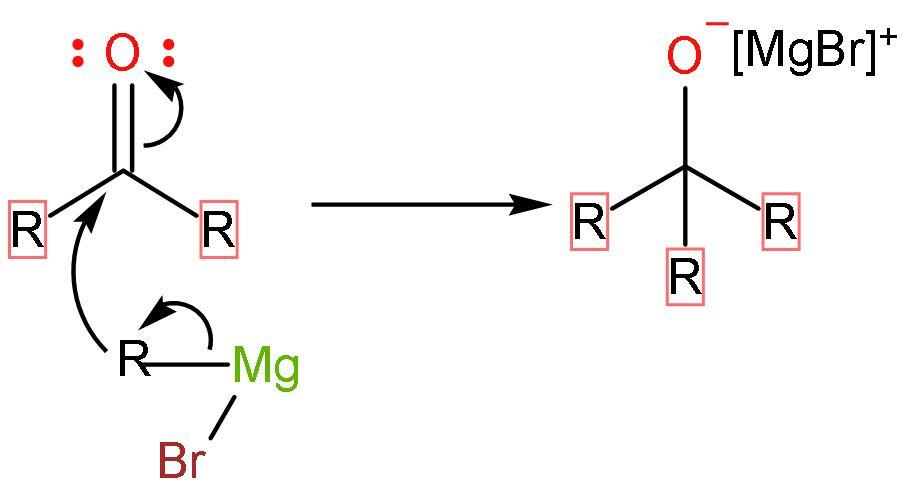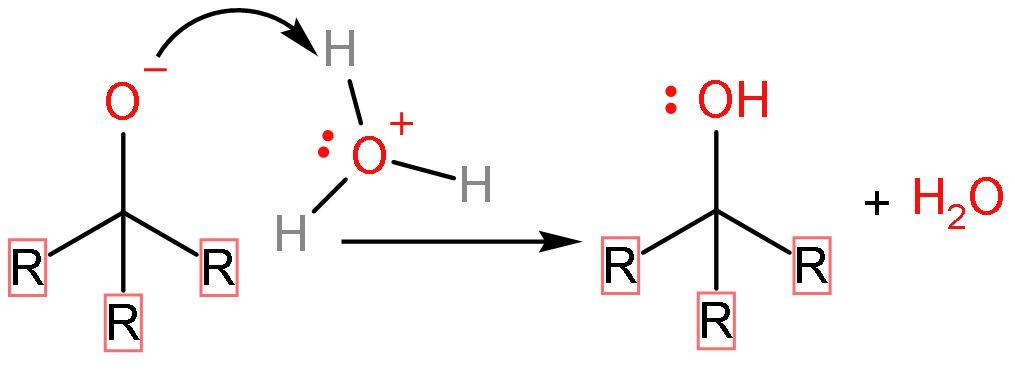
Identify the intermediate formed in Grignard reagent reaction with ester?
A. Aldehyde
B. Ketone
C. Benzene
D. Propene
Answer
499.5k+ views
Hint: Grignard reagent is a chemical compound with general name as alkyl magnesium halide with alkyl chain possessing negative charge and magnesium due to electropositivity having
Complete answer:
Let us solve this question using the mechanism of ester with Grignard reagent:
Step (1)- The Grignard reagent acts as a nucleophile and attacks the carbonyl group present in esters. After, the attack oxygen atom present in the carbonyl group will have the negative charge and the alkyl group adds to the carbon atom of the carbonyl group.

Step (2)- The negative charge on the oxygen atom forms bond with carbon, leaving the

Step (3)- The ketone formed further undergoes nucleophilic addition or reaction with Grignard reagent because it has a carbonyl group present in it. The process restarts with addition of Grignard reagent and forming negative charge on oxygen atom of carbonyl group.

Step (4)- The last step includes the protonation of water or hydrolysis of the compound to finally form alcohol as its product.

Ketone is the intermediate formed in Grignard reagent reaction with ester.
The correct option is option ‘b’.
Note:
Ester is less prone to Grignard reagent in comparison to aldehydes and ketones because the electrophilicity of carbon atoms of carbonyl group is decreased by the self-resonance or intramolecular resonance of esters. The lone pair of oxygen undergoes resonance with the double bond between carbon and oxygen atoms.

Complete answer:
Let us solve this question using the mechanism of ester with Grignard reagent:
Step (1)- The Grignard reagent acts as a nucleophile and attacks the carbonyl group present in esters. After, the attack oxygen atom present in the carbonyl group will have the negative charge and the alkyl group adds to the carbon atom of the carbonyl group.

Step (2)- The negative charge on the oxygen atom forms bond with carbon, leaving the

Step (3)- The ketone formed further undergoes nucleophilic addition or reaction with Grignard reagent because it has a carbonyl group present in it. The process restarts with addition of Grignard reagent and forming negative charge on oxygen atom of carbonyl group.

Step (4)- The last step includes the protonation of water or hydrolysis of the compound to finally form alcohol as its product.

Ketone is the intermediate formed in Grignard reagent reaction with ester.
The correct option is option ‘b’.
Note:
Ester is less prone to Grignard reagent in comparison to aldehydes and ketones because the electrophilicity of carbon atoms of carbonyl group is decreased by the self-resonance or intramolecular resonance of esters. The lone pair of oxygen undergoes resonance with the double bond between carbon and oxygen atoms.

Latest Vedantu courses for you
Grade 11 Science PCM | CBSE | SCHOOL | English
CBSE (2025-26)
School Full course for CBSE students
₹41,848 per year
Recently Updated Pages
Master Class 4 Maths: Engaging Questions & Answers for Success

Master Class 4 English: Engaging Questions & Answers for Success

Master Class 4 Science: Engaging Questions & Answers for Success

Class 4 Question and Answer - Your Ultimate Solutions Guide

Master Class 11 Economics: Engaging Questions & Answers for Success

Master Class 11 Business Studies: Engaging Questions & Answers for Success

Trending doubts
Give 10 examples of unisexual and bisexual flowers

Draw a labelled sketch of the human eye class 12 physics CBSE

Differentiate between homogeneous and heterogeneous class 12 chemistry CBSE

a Tabulate the differences in the characteristics of class 12 chemistry CBSE

Why is the cell called the structural and functional class 12 biology CBSE

Differentiate between insitu conservation and exsitu class 12 biology CBSE




